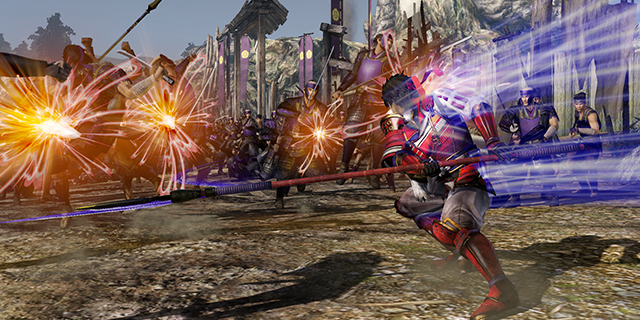
Another Musou game? Yes, Omega Force and Koei Tecmo America have been quite prolific as of late, pumping out releases in the Warriors series faster than most can keep track of them. Even those who love the franchise may be feeling some fatigue, and thinking that Samurai Warriors 4, the latest release, is a good one to skip and take a break. Fortunately (or unfortunately, depending on your wallet), the game justifies itself with refined combat, interesting battlefield strategy and a level of care and polish that has been absent in most Omega Force releases.
For many, it may seem like Samurai Warriors has been dormant for some time, and that’s not far from the truth. The last entries surfaced on the Wii and 3DS, respectively, neither particularly visible to traditional Warriors fans, and even that 3DS entry was a 2011 launch title. (For comparison, there have been six Dynasty Warriors releases since that 3DS Samurai game.) So Samurai Warriors 4 brings some new things to the table, but there’s even more value in reviving those concepts that make the series distinct in a modern, polished form. The sub-franchise takes a more tactical route, focusing on battlefield positioning and switching between heroes in different spots when the situation calls for it.
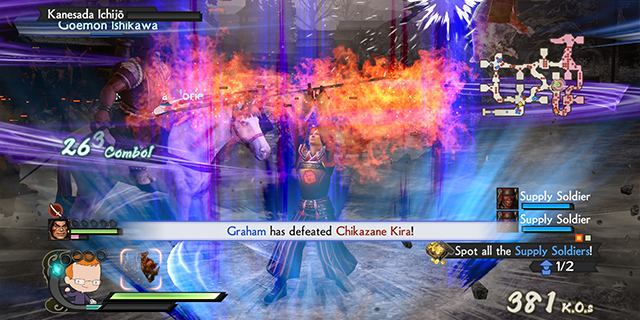
Samurai Warriors 4 seeks to add new combat options, most notably the quick-moving Hyper Attack. Leading with a press of Triangle begins a ninja-like dash through enemies, and subsequent combo options continue your darting through and toward foes. There is definitely time for both; Hyper Attacks are great for the journey between major officer battle sites, as you can take out smaller roving bands this way without stopping for the full, hit-everyone-around-you sort of gameplay for which the Warriors games are known. Certain characters are biased toward Hyper Attacks, as well as Normal Attacks and Power Attacks, but we wish these specialties were more pronounced; characters like Kunoichi really should be really good at Hyper Attacks and seldom doing anything else, while lumbering guys like Goemon shouldn’t be so fast on their feet.
The game puts a heavy emphasis on its character creation, allowing players to not only make their own different-looking fighters with a variety of weapons, but also decorate them with custom emblems and use images as character and musou attack art. Sure, this is mostly silly, and it does no favors to the developers’ attempts to create a cohesive world, but we enjoyed emblazoning our halberd-wielding doppelganger with the proper branding. If you wanted, the system is robust enough to closely recreate a fighter from another Warriors game and implement accurate portraits, but the fun here is in exploring the weirder corners of the creation system.
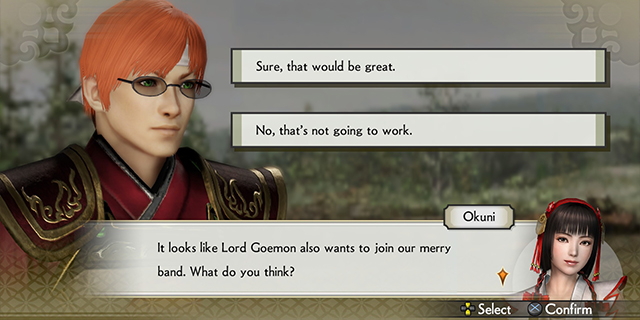
Created fighters can be played in Free Mode, but it’s the game’s Chronicle Mode that’s custom-built around these user-generated heroes. In it, you choose various aspirations for your avatar, achieving goals based on battle, money, knowledge or other factors. You also build up alliances with officers and bring them along to your cause. This is a fun way of imagining the rise to power in Japan, as you are initially confined to your prefecture but can branch out as you get stronger. Unfortunately, the pacing here seems off. The battles are indeed somewhat smaller than full-scale Story Mode ones, but we couldn’t shake the feeling that the mode doles out about a fifth of the experience we’re used to elsewhere. If it’s an attempt to make Chronicle seem more plodding and realistic, mission accomplished, but you’re better off grinding characters in other modes, then returning to Chronicle and using them to press your way forward.
What really makes Samurai Warriors 4 feel like a coherent, polished product is its aesthetics. Most Warriors games tend to be over-the-top, but just how well the menus, interfaces and environments make you think of the feudal Japan setting, and how seamlessly and smoothly they work, are new highs for the Warriors series and a great way to keep players immersed in the lore.
And despite (or maybe even aided by) a lack of English voice acting, it feels like the localization was undertaken with similar care. There are times when we felt the game assumed more knowledge of historical Japanese wars and heroes than was really necessary (especially in certain Chronicle Mode scenarios), but generally Samurai Warriors 4 makes you feel much more in a time and place than Dynasty Warriors games do with constantly-blaring guitars, saturated aesthetic and generic-feeling menus.
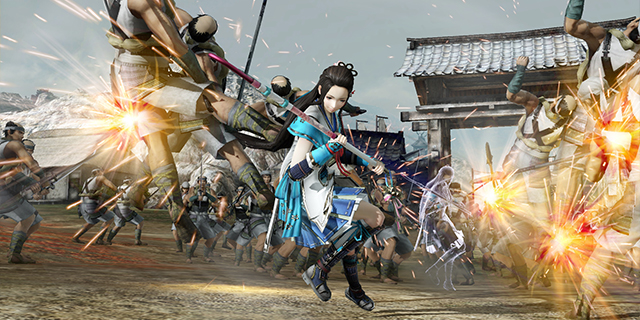
It feels like more focus was placed on the two-player capabilities in this edition. Of course, local split-screen and online co-op play have been available in previous entries, but from both a technical standpoint and a game design one, it feels like it’s gotten more care. The fact that the game always features two heroes in different spots on the battlefield allows for the objectives to engage both players rather than having them both running around to the same areas all the time. Strangely enough, though, this may have had a more positive effect on solo play than co-op ones, as it can break up the monotony to manage the two fighters and know when to switch back and forth. Split-screen, while still prone to occasional slowdown, seems to completely fall apart less often, an accomplishment with the trademark Warriors action spike.
Omega Force still isn’t the studio you turn to for technical proficiency, but Samurai Warriors feels much more polished and smooth than Dynasty Warriors 8 XLCE or Warriors Orochi 3 Ultimate. It’s possible that it’s due to the game’s somewhat-refined focus; it’s still releasing on PS4 (the version we played), PS3 and Vita, but Xbox systems and PC sit things out for this round. Regardless, the significantly-smoother performance combines with the brighter aesthetics of the environments to make everything feel less muddied and muddled and more intentional and enjoyable.
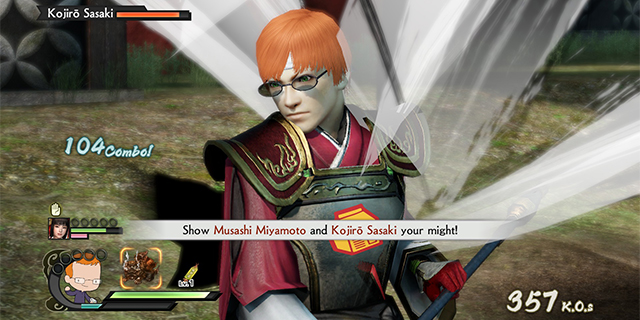
With the challenge of series fatigue and the sheer volume of content present in other Warriors releases, Samurai Warriors 4 doesn’t quite stand head-and-shoulders above the pack, but taken on its own, it leaves a more thoroughly positive lasting impression than its peers. It’s of special interest to those with a fondness for Japanese culture, but even a casual Warriors player looking to play a game every few years will find this one enticing.
Pros: Well-curated aesthetic, fun character creation, engaging battles
Cons: Relatively light on content, Chronicle Mode’s pacing is very slow



















